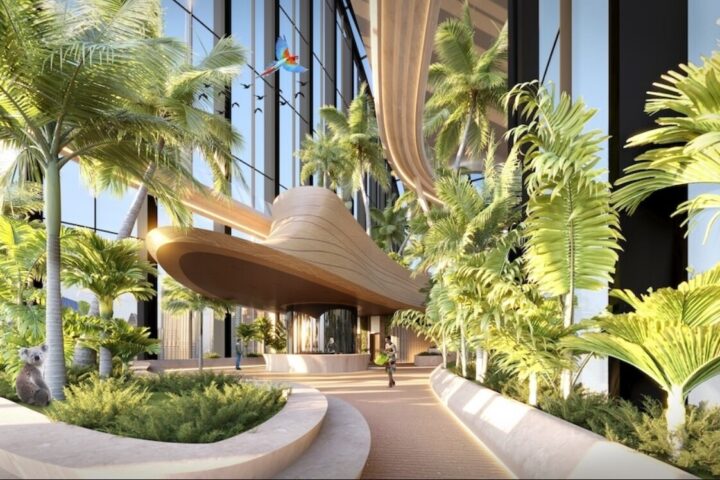In a bold move towards sustainable architecture, MVRDV unveils the ‘Sun Rock’, a solar panel-clad monolith in Taiwan. This innovative structure is not just a building but a statement, a “manifesto in a building” for Taiwan’s government-owned power company, Taipower. As Taiwan anticipates its transition to green energy, Sun Rock emerges as a beacon of this change, symbolizing Taipower’s commitment to a sustainable future. Located in the Changhua Coastal Industrial Park near Taichung, Sun Rock’s design is a masterclass in maximizing solar energy. Its rounded form is strategically sculpted to harness the maximum sunlight. The southern side slopes gently downwards, capturing the sun during mid-day, while the northern dome ensures exposure during mornings and evenings.

The façade, a series of pleats, supports photovoltaic panels interspersed with windows. These pleats are meticulously angled to optimize the energy-generating potential of the solar panels. The result? A staggering potential to generate nearly 1 million kilowatt-hours of clean energy annually. To put this in perspective, this is equivalent to the energy produced by burning 85 tonnes of crude oil. The building’s design is so efficient that it not only sustains itself but can also contribute to the energy grid.
MVRDV’s co-founder, Winy Maas, emphasizes the project’s unique potential, stating, “The user is an energy company, which has allowed us to do more than usual. We cladded the entire façade with photovoltaics, maximizing the energy gains to make it not only self-sustainable but also a tool of energy production.” He further adds, “Our design is completely data-driven. It’s always fun to see the results when you let analysis be the determining part of the design.”


But Sun Rock is not just about energy. At its heart lies the Data Room, a grand atrium showcasing real-time data on Taipower’s renewable energy generation. This transparency extends to the first-floor gallery, offering the public a glimpse into the maintenance of sustainable energy equipment, from solar panels to massive wind turbine blades. The top floor houses an exhibition space, and the roof, sheltered by a solar panel dome, offers a serene terrace adorned with trees, a relaxation spot for visitors and Taipower employees.
Similar Post
This blend of utility and public engagement makes Sun Rock more than just an operations facility. It’s a communication tool, a tangible representation of Taipower’s green ambitions. As MVRDV aptly concludes, the building is “an important communication tool for Taipower to publicly show their ambitions for a greener future.” However, while the Sun Rock stands as a testament to sustainable architecture, it also raises questions about the scalability of such projects. Can this model be replicated across other industries and regions? How will maintenance and technological upgrades be managed in the long run? And most importantly, will it inspire other corporations to adopt similar sustainable initiatives?

Sun Rock symbolizes more than architectural prowess; it embodies the aspirations of a sustainable future. Yet, its lasting influence will be determined by its practical realization, its ability to evolve with changing times, and its resonance with the broader community. A visionary idea, regardless of its grandeur, will only etch a lasting legacy if it seamlessly blends innovation with practicality, adaptability, and deep-rooted community engagement. The true measure of Sun Rock’s success will be its capacity to not only inspire but also pave the way for subsequent sustainable initiatives worldwide.

















